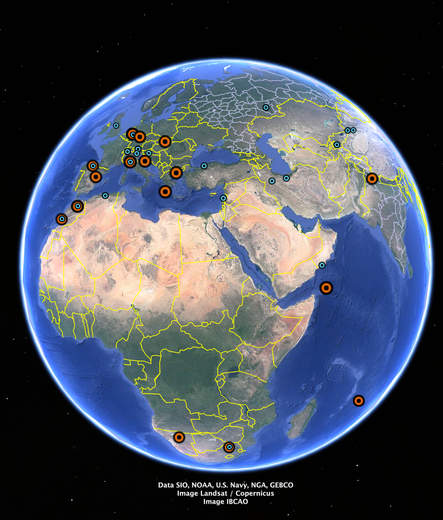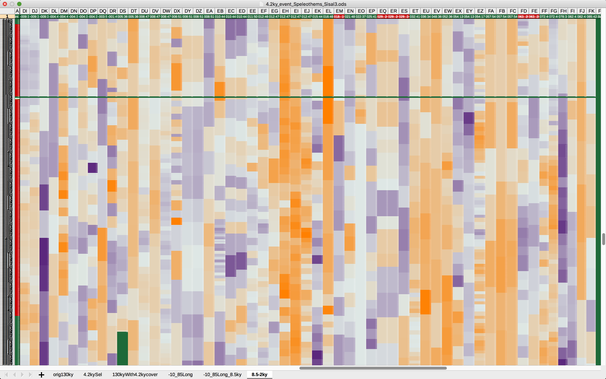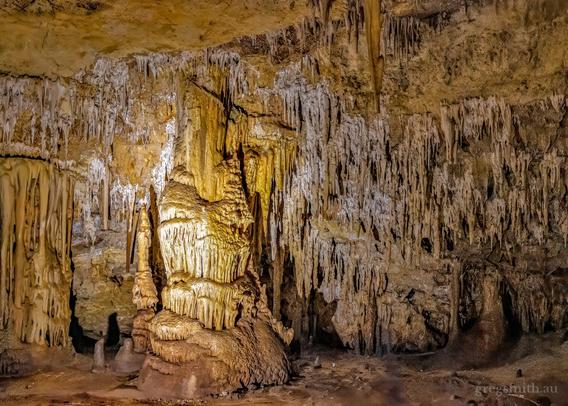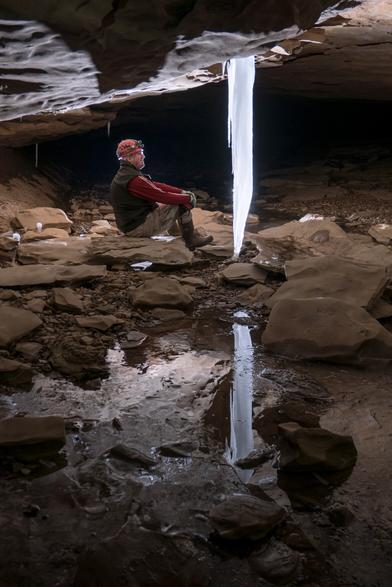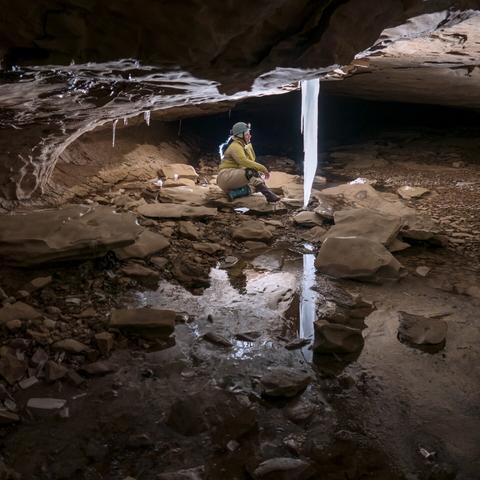Interesting paper out recently in ClimPast - subaquous speleothems record groundwater recharge in Mairs Cave, South Australia.
#speleothem
Always a good day when friends have a good day! Out today in NATURE (!) from Monika Markowska - 8 million year record of recurrent humid phases in Arabia.
https://www.nature.com/articles/s41586-025-08859-6
#Quaternary #QuaternaryScience #speleothem #speleothems #palaeoclimate
Too old, too dirty, to unradiogenic? Can’t use your #speleothem? Don’t despair! ITL dating is here to help you out! https://www.sciencedirect.com/science/article/pii/S1871101424001328 speleoseb.bsky.social @sumikotsuka.bsky.social
Interesting.
From what I recall from a few papers I read, the Mediterranean, or #MENA, experienced droughts in the 4.2ky event.
But figure 4 in the new literature review by #McKay et al 2024 shows a decidedly wet excursion for MENA: https://www.nature.com/articles/s41467-024-50886-w
They do mention the #Mediterranean and say, it were a complex and not at all clear case whether a drought was gripping the region or not.
So I pulled #d18O from cave #speleothem in the database " #Sisal3 " and plotted all those with okay resolution during the 4.2ky event.
The time span of the selection goes from 8.5ky to 2ky, like in McKay's paper.
My cave selection goes from longitude -9° to 85°E.
Locations are in the Google map, with the info whether it was dryer🔴 or wetter🌀 at 4.2ky.
A 3-colour-coded heatmap for the 50th percentile of d18O shows orange as drought and blue as wet.
More info in the ALT texts.
Conclusion: the mediterranean DID get dryer in the 4.2ky event. 🙂 🖖
Just published in Organic Geochemistry, "Fire-induced shifts in stalagmite organic matter mapped using Synchrotron infrared microspectroscopy", led by #ANSTO colleague Dr. Liza McDonough. We demonstrate for the first time that Synchrotron IRM is a promising non-destructive, high resolution (5 µm) technique for analysing stalagmite organic matter. The paper can be found #OpenAccess here: https://doi.org/10.1016/j.orggeochem.2024.104842
#speleothem #stalagmite #organicMatter #pastClimate #geochemistry #UNSW
Stalagmites stand mightily, stalactites hang tightly.
#nature #caves #naracoortecaves #speleothem #stalagmite #stalactite #weddingcake #naracoorte #southaustralia
"Forests moderate local climate by keeping their local environments cool. They do this partly by shading the land, but also by releasing moisture from their leaves. This process, called transpiration, requires energy, which is extracted from the surrounding air, thus cooling it. A single tree can transpire hundreds of liters of water in a day. Each hundred liters has a cooling effect equivalent to two domestic air conditioners for a day, calculates Ellison."
https://e360.yale.edu/features/how-deforestation-affecting-global-water-cycles-climate-change
It's now part of my new #Tegtmeier project: figure out how much eg. European and American land use change has impacted local, regional and continental weather. See above posting where I asked this question, too.
So I plot #treering widths alongside d18O from #speleothem (eg. stalagmite). Both proxies are precisely dated and (can) have annual resolution.
I would expect to see a warming =
trees grow more when, at locations from where "their weather comes", other forests are felled .
And a drying =
d18O increase in speleothems.
I use #GoogleEarth and my rudimentary history knowledge to determine certain locations in Australia, New Zealand, USA and Europe. tbc.🍿
A full on but successful 4 days on the XFM beamline at the Ausgralian Synchrotron. We mixed things up this time by running some tree cores for Casey's PhD work - lots of cool features showing up! We also mapped a bunch of stalagmites, including some pilot data for my next job. 74 elemental maps made, a new record for us!
#synchrotron #xfm #dendrochemistry #speleothem #stalagmite #palaeoclimate #palaeoemvironment
I've said this a few times now, but, pending disaster, today is my last day of labwork for this postdoc! I've got 4 mm of sample to mill (40 samples!). This speleothem grew during the early Holocene before stopping, and starting again in the 1930s. I'm very excited to see the stable isotope data approaching this hiatus!
The listening entertainment for the day is the Hobbit, as read by Andy Serkis. Libraries are the best 💚
The good folk at ANSTO did a nice summary of our speleothem palaeofire project over on Insta! Apparently, they did it last May, and I totally missed it 🤦🏻♀️
https://www.instagram.com/reel/CsiXVBItphn/?igsh=MTZpcmdsZTQ4OXFzMQ==
Thursday at #AGU2023
If you're here, my group and collaborators are presenting multiple #speleothem related projects - from Holocene climates through decglacial fires, to a hidden treasure in your U/Th powders!
Another pic from the the #Tresviso caving expedition to the #picosdeeuropa. This was a very unique #speleothem, which (I think) was formed when a stalactite grew long enough to reach a pool of water, growing outwards in all directions into a ball, then the pool of water draining in a later stage of cave development. Do any of my fellow #geologists know what this is called? We affectionately named this chamber 'monkeyfist chamber' in relation to the similar looking climbing knot. (hand for scale)
LA-ICP-MS is temporally wild. It somehow manages to be both incredibly fast (getting the data!) and incredibly slow (processing the data!). Staving of frustration by reminding myself that this is thousands of years of data, and if it takes a day to process, well that's still really, really, quick!
Our @unsw / #ANSTO team is presenting at #EGU23 today! We're in session BG1.2, poster Hall A, from 2pm until the coffee break. Come and find as at A.191, A.202 and A.203 to see what we've been up to in the #speleothem #palaeofire world.
Wisconsin Stalagmite Records North American Warming
A speleothem has revealed rapid periods of warming across the interior of the continent during the last glacial period, corresponding to similar events recorded in Greenland ice.
https://eos.org/articles/wisconsin-stalagmite-records-north-american-warming #wisconsiin #stalagmite #speleothem #warming
‼️#Speleothem, #cave, and #karst enthusiasts - don't forget to submit your abstract to our session at #EGU23‼️🪨💎🌧️🌲🦇🌡️
abstract deadline is tomorrow🔜meetingorganizer.copernicus.org/EGU23/session/45507 ‼️‼️‼️@EuroGeosciences@mastodon.social
A bit of a late #HappyNewYear coinciding with first day back at work for 2023! I had a very rejuvenating break, and I'm feeling pretty excited for another year of #speleothem #fire science, plenty of #cycling, and some great #hiking.
This gorgeous ice curtain-turned-column (yes, it connects floor to ceiling!) was made possible by many days of below freezing (and near / at 0-f temperatures). What a chilly but fun trip underground. And yes, the reflection is on ice as well, there isn't any liquid water here!

